Tasha’s Cauldron of Everything is overflowing with new player options, including some wild new summoning spells. As discussed in Spell Spotlight: Conjure Minor Elementals and Spell Spotlight: Conjure Animals, spells that summon other creatures can be some of the most frustrating spells in the game. They take up lots of time at the table by adding new combatants to the fight, sometimes even doubling the number of bodies on the field, forcing players plan out several new creatures’ actions and have a bevy of additional monster statistics on hand.
A handful of new summoning spells in Tasha’s addresses a number of common concerns that players have with summoning spells, making it faster and easier to play Circle of the Shepherd druids and School of Conjuration wizards and other summoner-type characters in your D&D games.
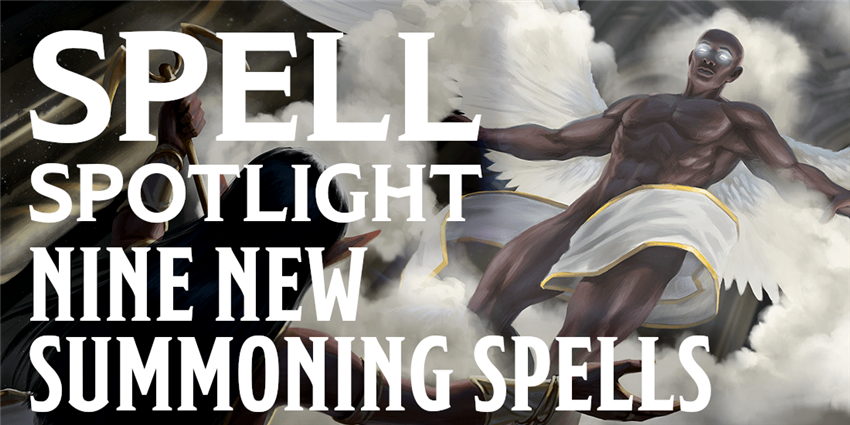
New Spells for Summoners
Tasha’s Cauldron of Everything introduces no fewer than nine new summoning spells, usable by a variety of different classes. These spells are already in your Compendium if you’ve purchased Tasha’s, but you can also purchase these spells individually by scrolling down to the Spells section on the Tasha’s Cauldron of Everything product page on the D&D Beyond Marketplace. In order of spell level, these spells are:
- Summon beast, a 2nd-level spell for druids and rangers
- Summon fey, a 3rd-level spell for druids, rangers, warlocks, and wizards
- Summon shadowspawn, a 3rd-level spell for warlocks and wizards
- Summon undead, a 3rd-level spell (the only necromancy spell of the bunch) for warlocks and wizards
- Summon aberration, a 4th-level spell for warlocks and wizards
- Summon construct, a 4th-level spell for artificers and wizards
- Summon elemental, a 4th-level spell for druids, rangers, wizards, and warlocks of the Fathomless patron (water only)
- Summon celestial, a 5th-level spell for clerics and paladins
- Summon fiend, a 6th-level spell for warlocks and wizards
These spells range from 2nd to 6th level, and give characters of a variety of different classes the ability to summon creatures from almost every type in the game. Notably, humanoid, dragon, giant, ooze, and plant are missing—though there’s probably a good reason for most of those creatures not to appear in this list of conjurations. It would be cool to summon a gloopy ooze or a minor drake to help you fight, though, wouldn’t it?
Have you created a summoning spell for oozes or dragons in the D&D Beyond Homebrew tools? Share it in the comments!
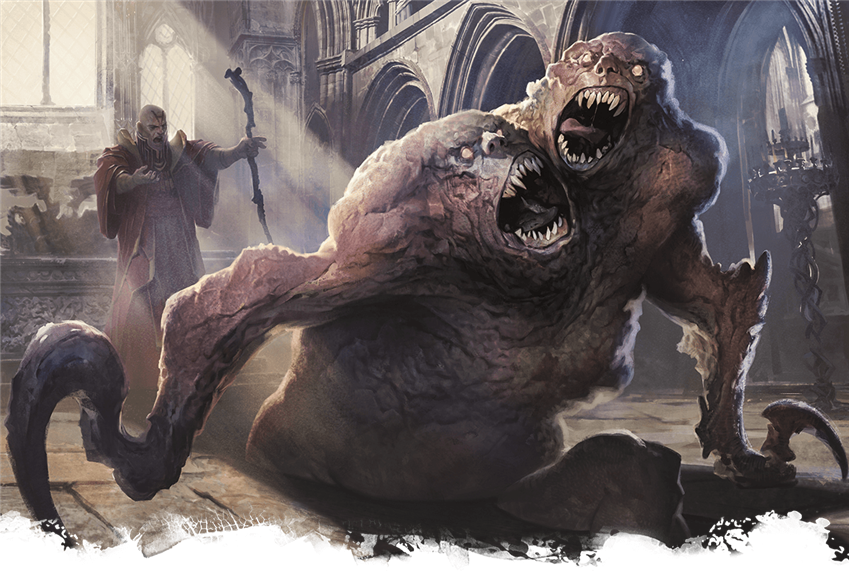
These spells share a number of similarities. Notably, they all summon a single creature, have a casting time of 1 action, last as long as you concentrate on them up to a maximum of 1 hour, the spell ends when the creature is reduced to 0 hit points, and you can conjure the creature within 90 feet of the caster. They also all require an expensive material component which, notably, is not consumed when you cast the spell. So, once you spend money on your component, you can use it to cast the spell as many times as you want. If you look closely, you’ll notice that the cost of this special material component is a number of gold pieces equal to the level of the spell × 100. So, the 2nd-level spell summon beast requires a golden acorn worth 200 gp, while the 6th-level spell summon fiend requires a ruby vial worth 600 gp.
Also, these creatures’ proficiency bonus is always equal to yours, and their power scales based on the level at which you cast the spell. That makes these spells some of the only spells in fifth edition Dungeons & Dragons that scale in power based on your character’s level—to say nothing of the fact that they also scale in power based on your spell level!
Let’s take a quick look at the summon beast spell for an example of how these spells work!
Summon Beast
This 2nd-level spell is available to druids and rangers. When you cast it, you call forth a bestial spirit, and choose if the beast you summon is aquatic, aerial, or terrestrial. Other than that choice, its cosmetic appearance is entirely up to you. You’ll find that this is a common theme among these new summoning spells, too; their stats are identical no matter what appearance you decide this spirit creature takes.
This beast’s hit points, movement speed, and its unique trait varies based on what type of environment it belongs in. Land creatures have a climb speed and high hit points, and have Pack Tactics. Air creatures have low hit points, a fast flying speed, and the enviable Flyby trait. Finally, water creatures have a swimming speed, high hit points, the Pack Tactics trait, and the ability to breathe underwater—but of course, they can’t breathe on land.
This beast is Small size, about the size of a large terrier, an eagle, or a small seal. They have relatively low Armor Class and hit points, but make up for it with a powerful attack and useful offensive traits like Flyby and Pack Tactics. Their Multiattack trait lets them make a number of attacks per turn equal to half the spell’s level—since this is a 2nd-level spell at base, they can only make one attack per action, but if you cast it using higher-level spell slots, they can make two attacks with a 4th-level slot, and so on.
As you can see, each of these new summoning spells allow you to customize your conjured creature on the fly, choosing certain aspects of them to suit the situation, and even improving their power with increased AC, hit points, attack bonuses, and damage based on the level you cast the summoning spell at. This is highly customizable, but also requires you to do some quick napkin math at the table, so be prepared by getting your creature’s stats ready while your friends are taking their turns before you!
Every one of these spells has a variety of different forms for your creature to take, giving you the ability to conjure the right creature for the task when you need to.
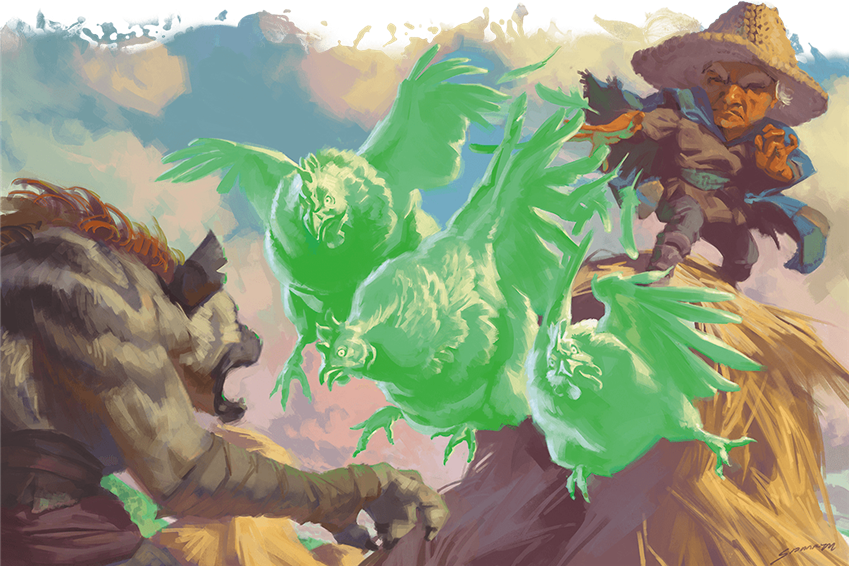
Summon Fey
This 3rd-level spell, for druids, rangers, warlocks, and wizards, summons a fey spirit that is skilled at debuffing enemies and making them easier for you and your allies to defeat. You choose a mood for the fey when you summon it, Fuming, Mirthful, or Tricksy. Each of these moods grants the fey a debuffing power that it can use when it uses its Fey Step bonus action. (Though, the fuming fey is just good at attacking, since it’s so angry.)
Summon Shadowspawn
This 3rd-level spell for warlocks and wizards conjures a horrid creature from the Shadowfell to do your dark bidding. You choose an emotion when you summon it, Fury, Despair, or Fear, which grants it new abilities to aid in offense, debuffing, or stealth, respectively. This shadowspawn is an ugly, misshapen, and vaguely humanoid creature, like a grotesque thing out of a nightmare.
Summon Undead
This 3rd-level spell for warlocks and wizards calls forth an undead spirit to plague the living. When you summon it, you choose if the undead is ghostly, putrid (like a festering zombie), or skeletal. Ghostly undead are mobile creatures skilled at debuffing enemies by frightening them, while putrid undead are likewise strong debuffers with an aura that causes creatures to be poisoned and an attack that can paralyze. Skeletal undead lack the mobility of ghosts and the negative status conditions of zombies, but possess a powerful and straightforward necrotic magical attack.
Summon Aberration
This 4th-level spell for warlocks and wizards summons a creature whose spirit is drawn from the alien horrors of the Far Realm, the roiling planar power of Chaos, or the hungering stars themselves. When you summon it, you choose if your aberration is a beholderkin, a slaad, or a star spawn. Beholderkin are powerful, mobile ranged damage-dealers. Slaad are durable, regenerating melee fighters. And star spawn are so toxic to the mind, that even being near one causes creatures to suffer psychic damage.
Summon Construct
Artificers will love this 4th-level spell, because it represents their ability to deploy a powerful fighting machine of their own design. Wizards, too, can call forth a golem of their own creation or a modron from the orderly plane of Mechanus. You can choose stone, clay, or metal, with metal constructs dealing heavy damage through their heated bodies, stone constructs debuffing foes by infecting nearby creatures of flesh and blood with their stony nature, and clay creatures fighting in a berserk fury against all nearby enemies.
Summon Elemental
This 4th-level spell for druids, rangers, and wizards gives you four options to choose from! Despite the many different options to choose from, the differences between these elementals feel less significant than the differences between other summoned creatures. They generally only affect a movement type, a type of damage resistance, its attack’s damage type, and the rarely useful Amorphous Form ability. The Fathomless warlock can cast this spell, but can only summon water elementals. Given how similar the four elementals summoned by this spell are, this isn’t much of a restriction.
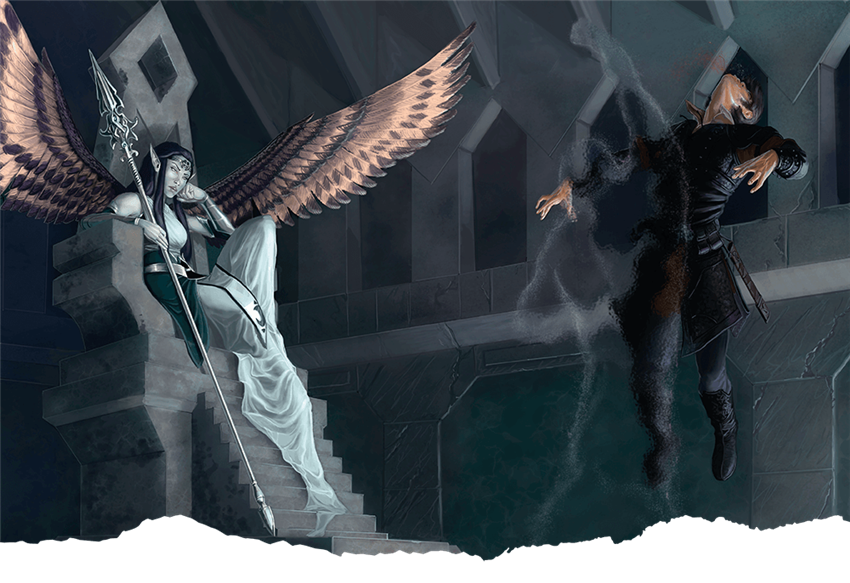
Summon Celestial
The power to summon angels to is granted to clerics and paladins with this 5th-level spell. When you summon a celestial with this spell, you can gain access to one of two types: Avenger or Defender. Avengers are powerful, mobile damage dealers with their Radiant Bow, and Defenders are tanky protectors with the ability to heal whenever they attack with their Radiant Mace. Once per day, either of these types of celestials can confer a small amount of healing upon another creature.
Summon Fiend
Beyond the shining light of heaven lives the gruesome decadence of fiends. Available to wizards and warlocks, this 6th-level spell allows you to summon forth a demon, a devil, or a neutral party in the war to control the cosmos, a yugoloth. These fiends are all quite different, with demons being wild terrors in combat that die as explosively as they lived. Devils are flighty ranged combatants, hurling flame while they fly out of range of enemy attacks. And yugoloths are evasive combatants who warp around the battlefield while tearing chunks out of their foes with their claws.
What summoning spells do you want to use? What creatures will you call forth from the beyond to do your bidding? And what class do you most want to play, now that these spells are at your disposal?
Create A Brand-New Adventurer Acquire New Powers and Adventures Browse All Your D&D Content
 James Haeck is the lead writer for D&D Beyond, the co-author of Waterdeep: Dragon Heist, Baldur's Gate: Descent into Avernus, and the Critical Role Explorer's Guide to Wildemount, a member of the Guild Adepts, and a freelance writer for Wizards of the Coast, the D&D Adventurers League, and other RPG companies. He lives in Seattle, Washington with his fiancée Hannah and their animal companions Mei and Marzipan. You can find him wasting time on Twitter at @jamesjhaeck.
James Haeck is the lead writer for D&D Beyond, the co-author of Waterdeep: Dragon Heist, Baldur's Gate: Descent into Avernus, and the Critical Role Explorer's Guide to Wildemount, a member of the Guild Adepts, and a freelance writer for Wizards of the Coast, the D&D Adventurers League, and other RPG companies. He lives in Seattle, Washington with his fiancée Hannah and their animal companions Mei and Marzipan. You can find him wasting time on Twitter at @jamesjhaeck.








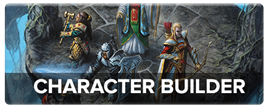
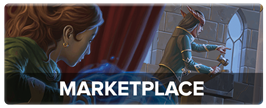
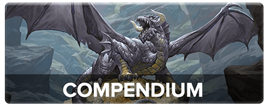
-
View User Profile
-
Send Message
Posted Dec 16, 2020Cool article
First
(I want to play a wizard because of this.)
(I always wanted to play a wizard, actually.)
(It's just so complex!)
-
View User Profile
-
Send Message
Posted Dec 16, 2020Awesome, thanks! Second.
-
View User Profile
-
Send Message
Posted Dec 16, 2020Hello! Third. These are great! I want Summon Celestial for my Paladin.
-
View User Profile
-
Send Message
Posted Dec 16, 2020Near the start of the article, did you mean Shepherd circle druids & conjuration wizards? Those are the ones who get buffs to their summons.
-
View User Profile
-
Send Message
Posted Dec 16, 2020I can’t wait to get Tasha’s. I have been wanting more summoning spells for a while.
-
View User Profile
-
Send Message
Posted Dec 16, 2020I had a player who loved gelatinous cubes, so while he never made his own spell, in later campaigns I hinted that he became a powerful archmage and created a spell called Taco's Slippery Slimy Sludge Summoning.
-
View User Profile
-
Send Message
Posted Dec 16, 2020The Shadowspawn are monstrosities, although I've always though there should be a Shadowspawn creature type that things like sorrowsworn and perhaps Shadar-Kai could be in that category.
-
View User Profile
-
Send Message
Posted Dec 16, 2020Finally, a spell that summons useful fey! If you restrict yourself to the monster manual, the conjure fey spell can be pretty useless, especially considering there are very few powerful fey. I'm not even sure there is a single fey in the monster manual, or even in the other sourcebooks, which matches even the max CR of the lowest level conjure fey. (Even if there are, there are so few that I am under the illusion that there are none despite owning Monster Manual, Volo's, and Mordenkainens.) These spells are all pretty amazing. So glad you guys made this stuff!! We can finally make a fun conjurer build! (Not that I'm saying they weren't fun before, they were just really restricted.)
-
View User Profile
-
Send Message
Posted Dec 16, 2020We need more fey anyway guys! Just sayin'... :)
-
View User Profile
-
Send Message
Posted Dec 16, 2020Why is the summon celestial spell so weak compared to almost every other summon spell?
By the time a Paladin gets this spell it's basically useless...
The avengers migth be useful because of the range option, but the defender would go down far to quickly to actually be useful. If it could heal without actually having to attack first it could have some use at least.
Am I missing something here?
-
View User Profile
-
Send Message
Posted Dec 16, 2020Great article! I like how you explained what each of them summoned thematically.
I had a player in a campaign which just wrapped up who had really long turns because they summoned too much, and these have really helped, partly because the monster shares your turn, and also because it is a stat block right in the book. I wish there was a 1st level summoning spell so that full-on summoners could have something to do with their 1st lv spell slots. That might be a good one to make a homebrew ooze for.
-
View User Profile
-
Send Message
Posted Dec 16, 2020I'm really annoyed that they dropped Summon Fey from the Bard list; I'd been playing the UA version on my Bard and it was a lot of fun for my vainglorious, and extremely fragile, tiefling to summon a satyr that looked like him as backup.
There's just no good reason for it to be axed from Bard except to give a big middle finger to bards who are the only spellcaster that didn't gain any of these summon spells. They're no more abusable on a Bard than on any other caster so why axe it?
-
View User Profile
-
Send Message
Posted Dec 16, 2020Sadly, Shepherd circle druids don't get any special benefits with their new summon spells. The new summons don't have hit dice, so their hit points can't increase, and they don't have natural weapons to render as magical. The only benefits they get are with their totems.
-
View User Profile
-
Send Message
Posted Dec 16, 2020Summoning spells. The true nightmare for every DM. Dear players when you want to summon something really cool pls have the stats ready and at best some minis. Your DM cant predict every randomness you throw at him.
-
View User Profile
-
Send Message
Posted Dec 16, 2020Sorrowsworn are monstrosities. And summon shadowspawn usually just summons a sorrowsworn.
-
View User Profile
-
Send Message
Posted Dec 16, 2020I think some hag in the Monster Manual is CR 2.
-
View User Profile
-
Send Message
Posted Dec 16, 2020yeah... I'm the DM and the party's circle of the shepard druid summoned a bunch of deer. the player was new and didn't have a DDB account so... I had to keep track myself as well as have the stats up constantly
-
View User Profile
-
Send Message
Posted Dec 16, 2020One thing I like is if I were to give this to an enemy NPC, I would know what the expect, rather than needing to make a list of the multiple options they might summon. It also helps with calculating CR, because giving an enemy Conjure Animals can really only be balanaced if you limit what they can summon, but these spells have only 3 options and the rest is flavor.
-
View User Profile
-
Send Message
Posted Dec 16, 2020Yeah, James can you help us get some official word on this? I have seen quite a few people asking here (forums) and on social media without reply as to how the benefit of being a Shepherd druid is meant to help with these summons. I am DMing at the moment but my next character was going to be this subclass.
It is one of only a couple of specialised summoners and it is really hard to believe that this was missed in design of an entire suite of _summoning_ spells that have very specific mechanics.
-
View User Profile
-
Send Message
Posted Dec 16, 2020These spells really make playing a druid or ranger who likes furry friends a LOT easier to play, not to mention a necromancer. NICE WORK!
How about adding Summon Undead to Death Domain and Oathbreaker in place of Animate Dead? Easy enough house rule.